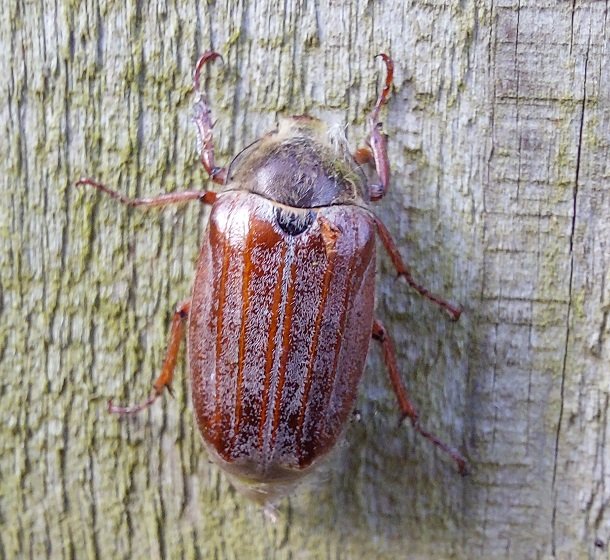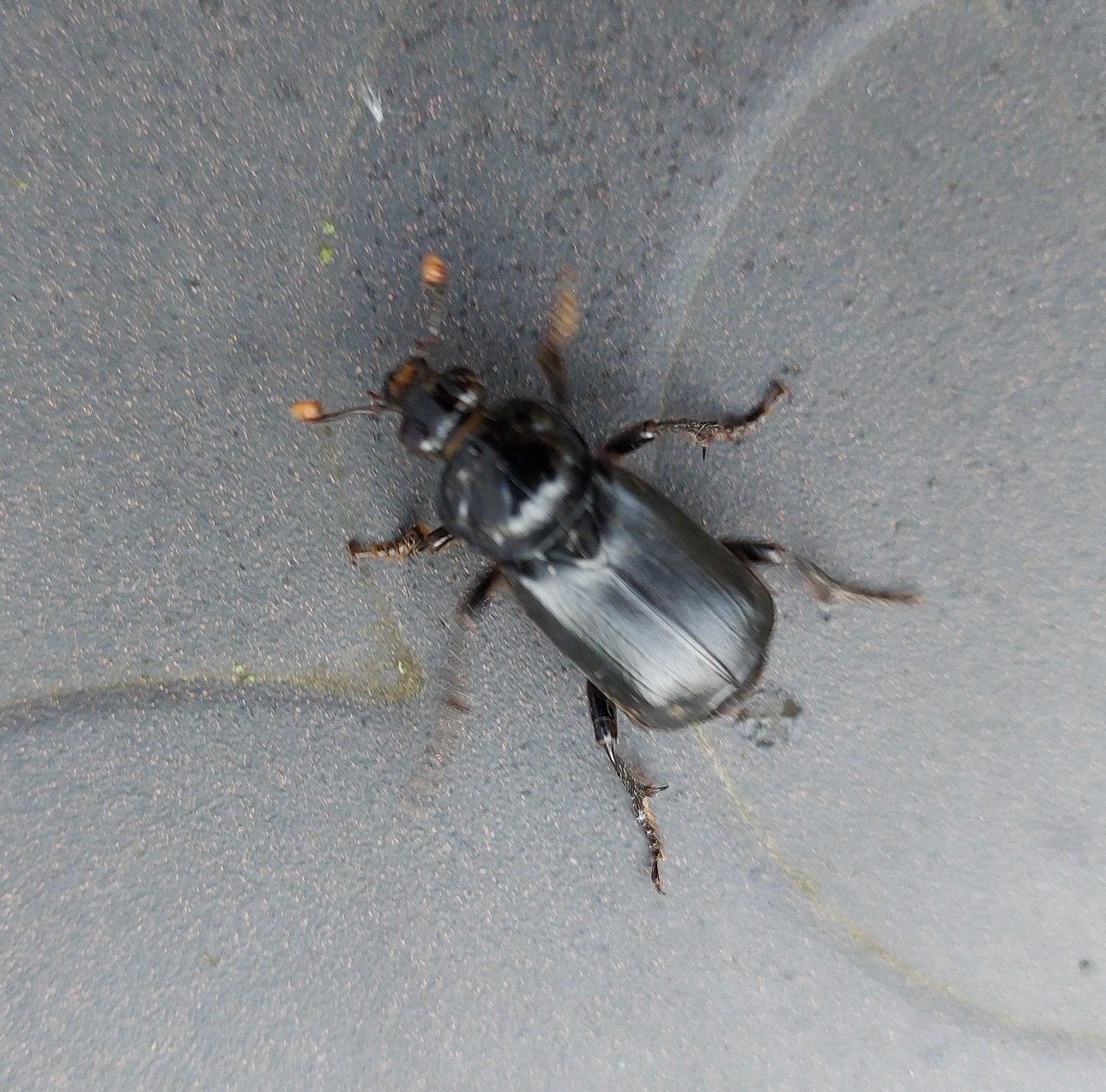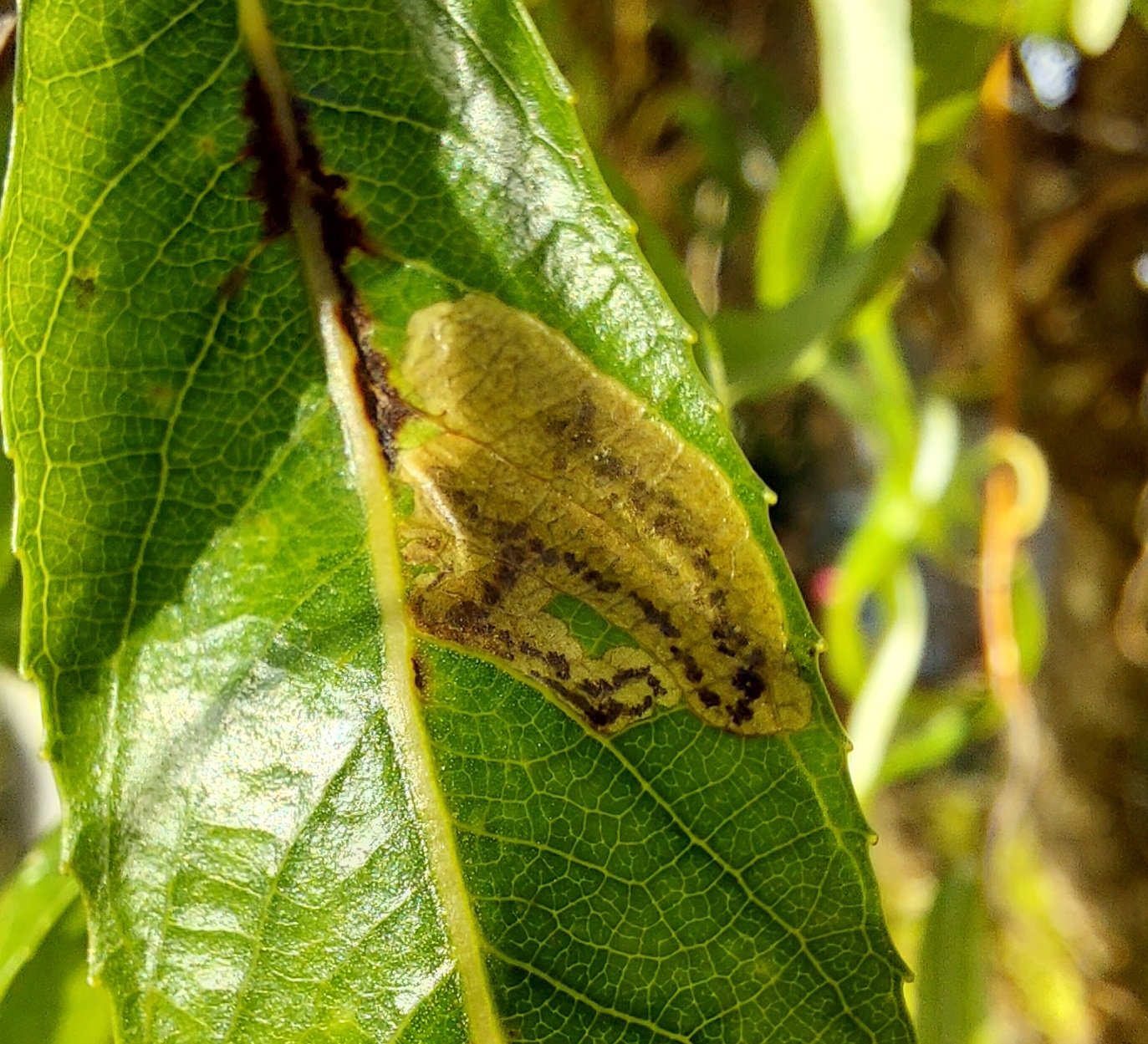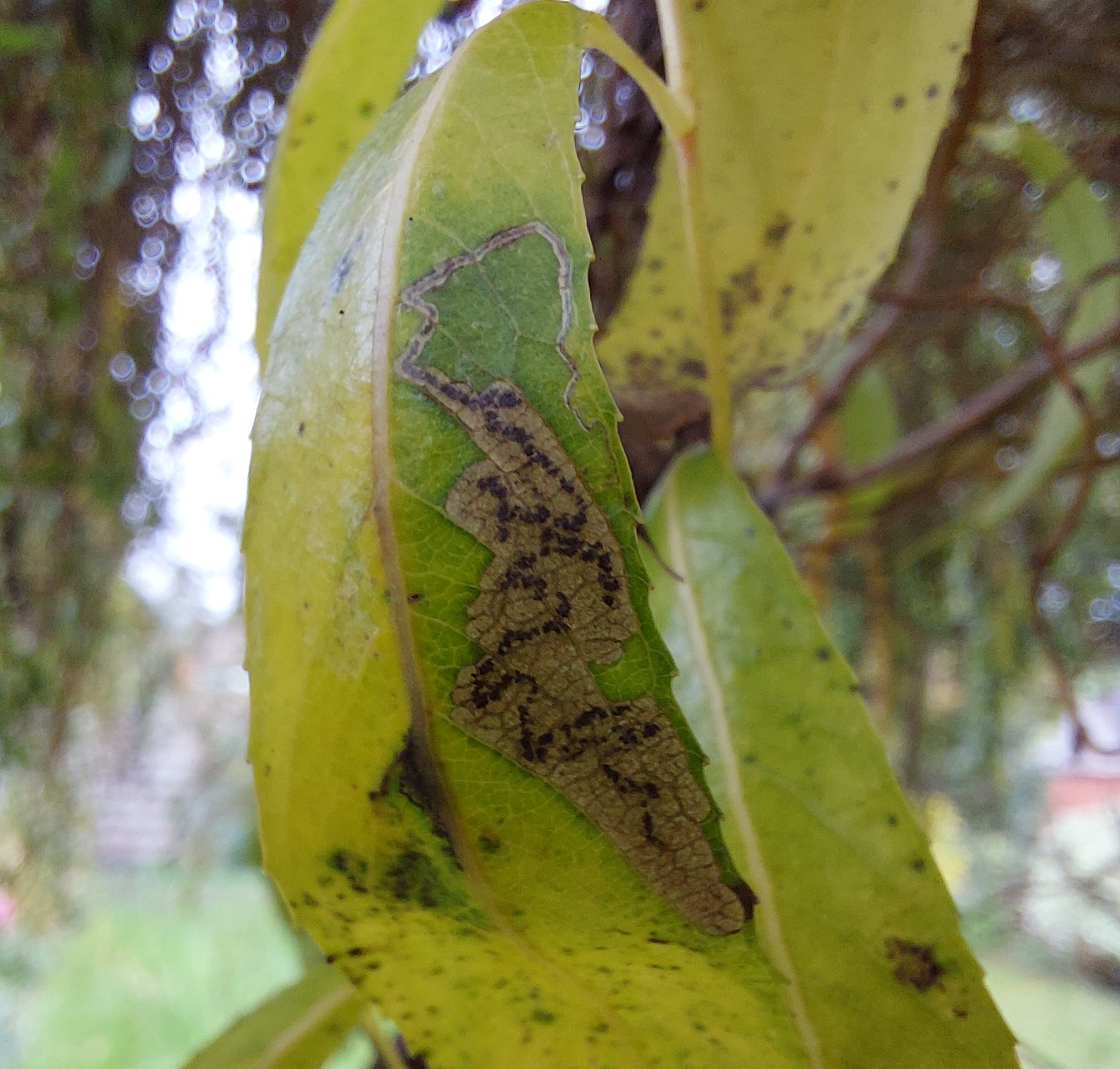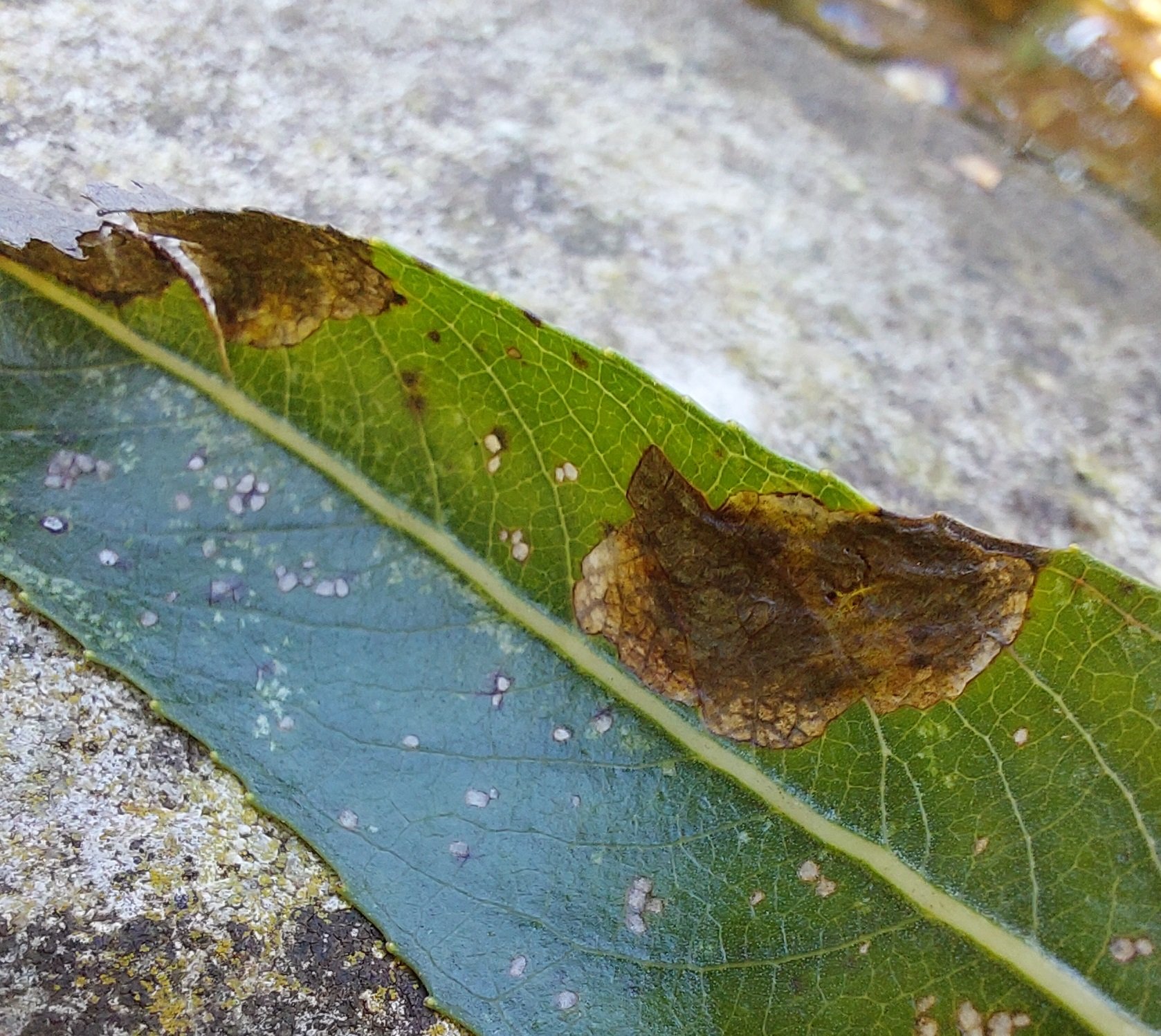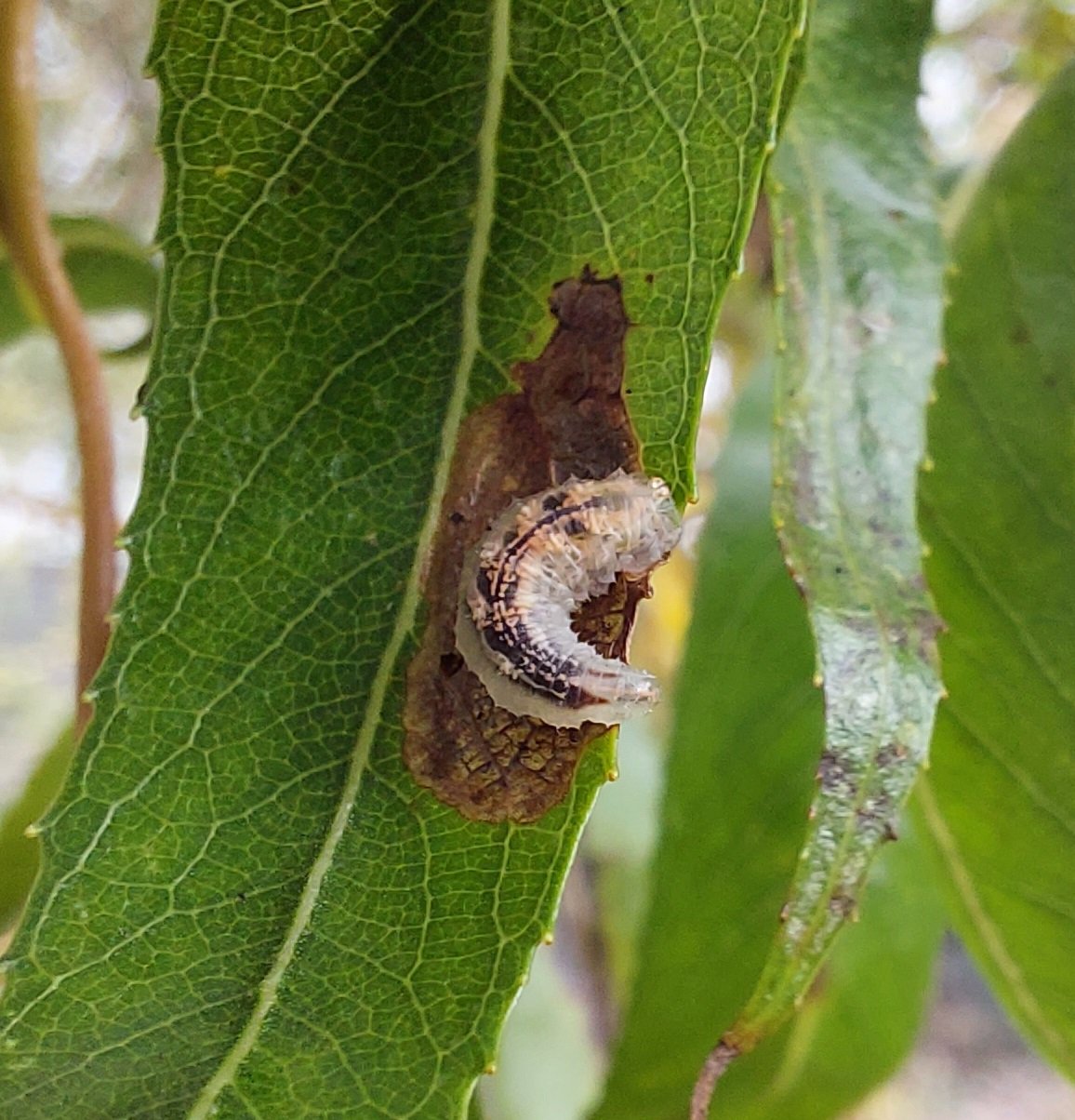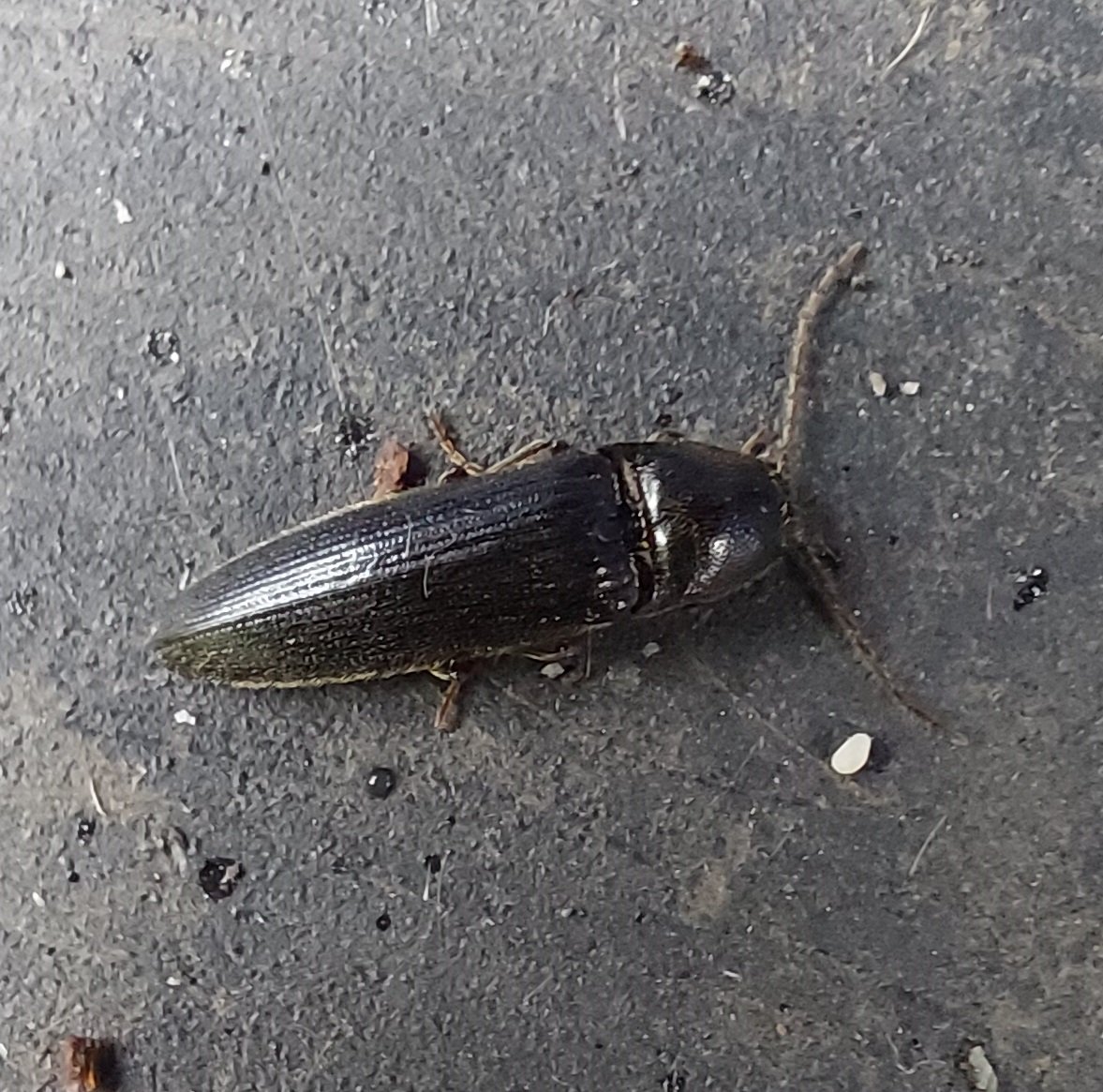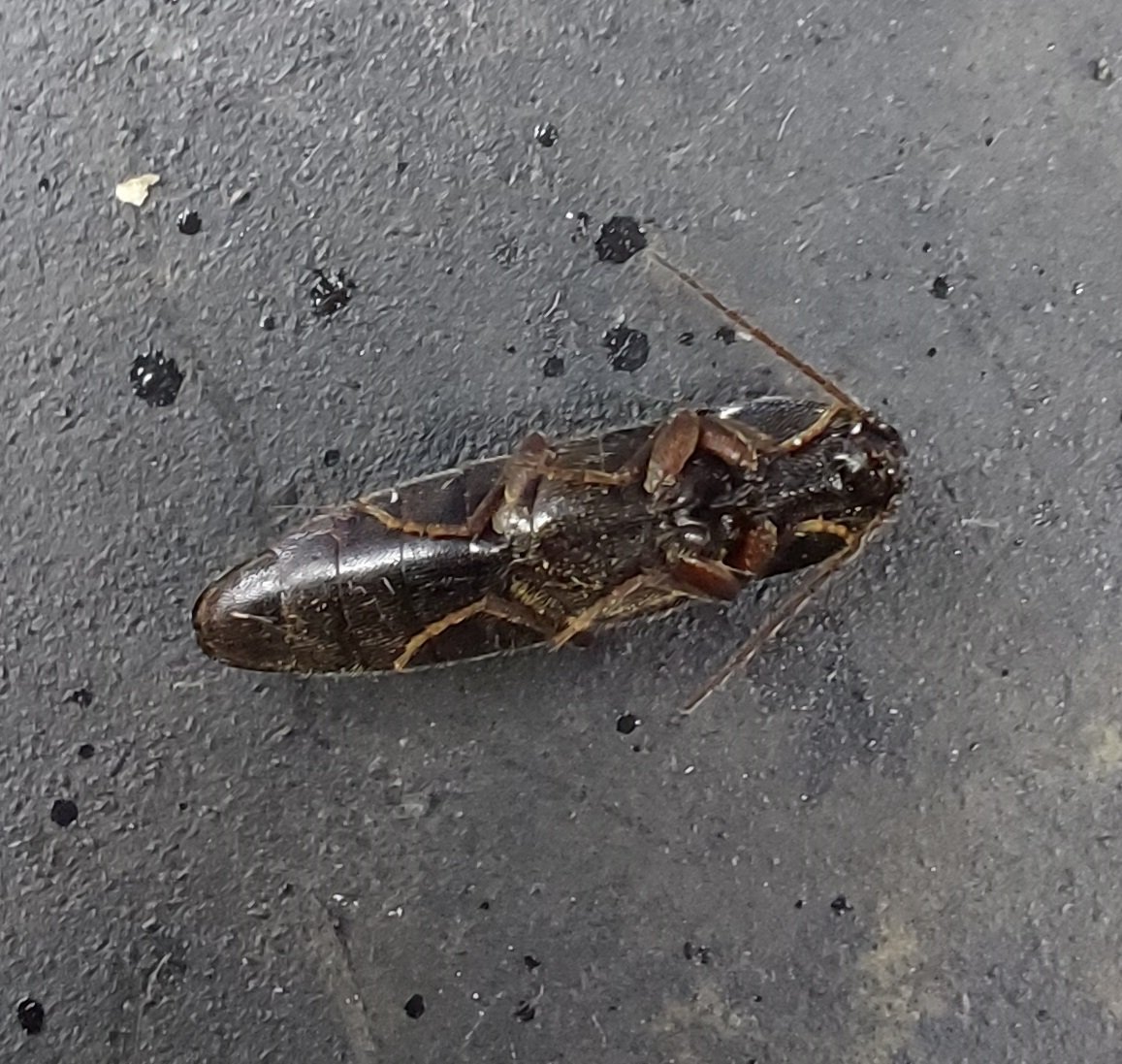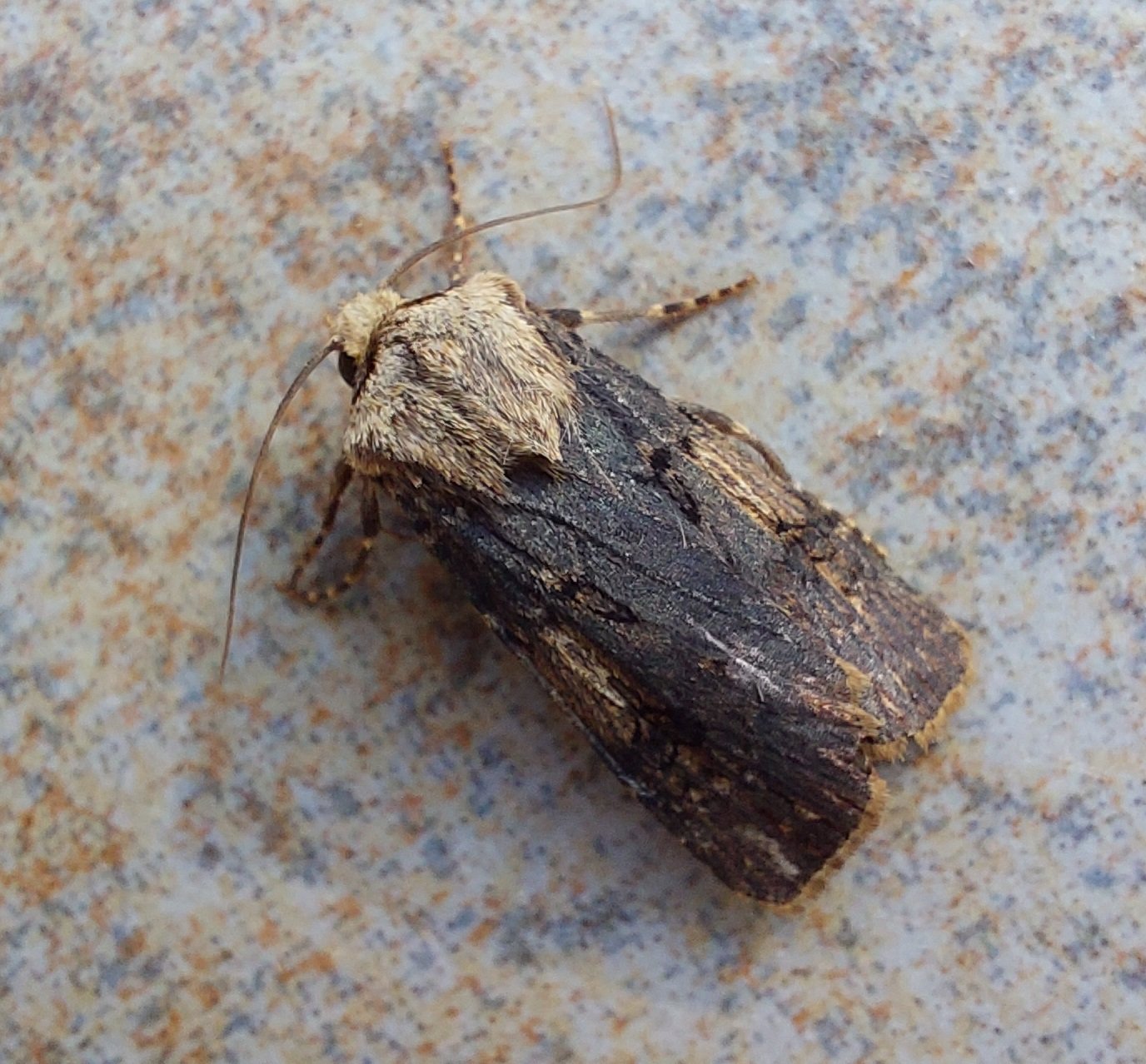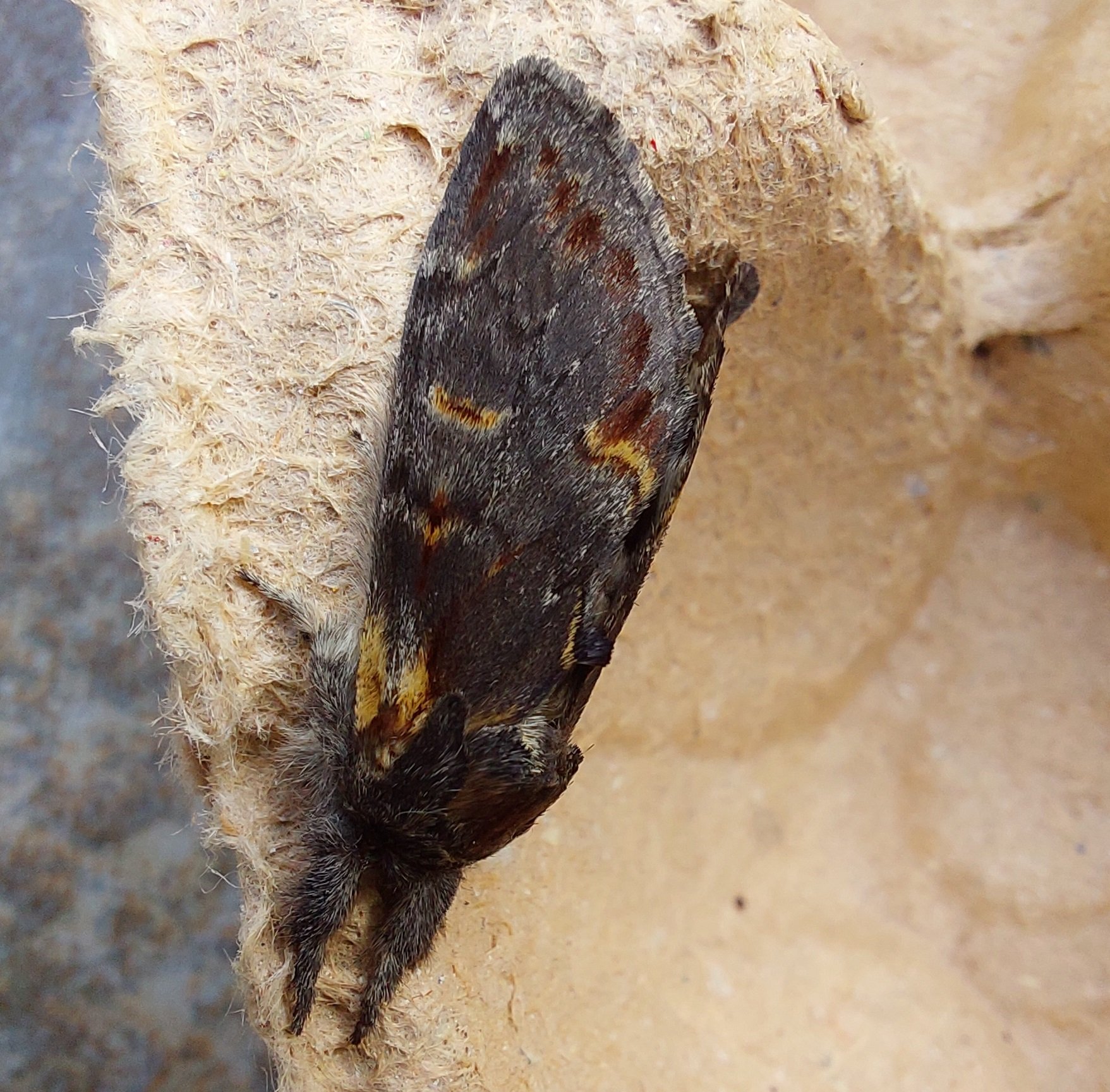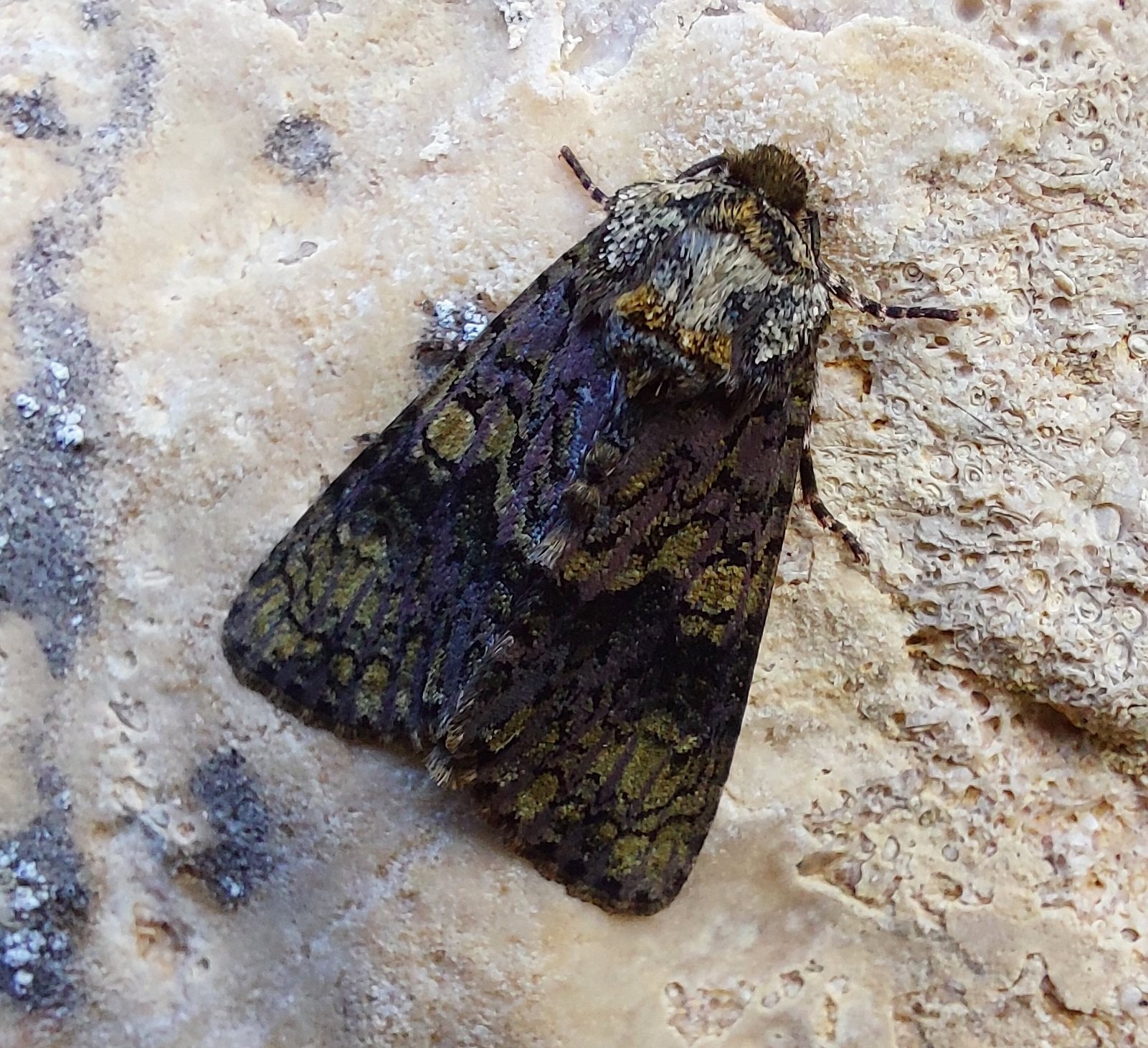The first two leaf-mines are from the larvae of a Sallow Pygmy moth (Stigmella salicis, #973). These moths have two generations in the Spring and Summer and the twisting mines from the second generation are seen right through to November. The mine doubles back to create a blotch and the frass makes a broken line in the centre of the mine.
The second pair of mines are from the larvae of a weevil Isochnus sequensi (#680), which leaves these dark, blotchy mines. The larva by the second mine is that of a Syrphus hoverfly, which is a predator mostly of aphids and but also other insects.










